#Elizabeth Alexandra Mary York
Text
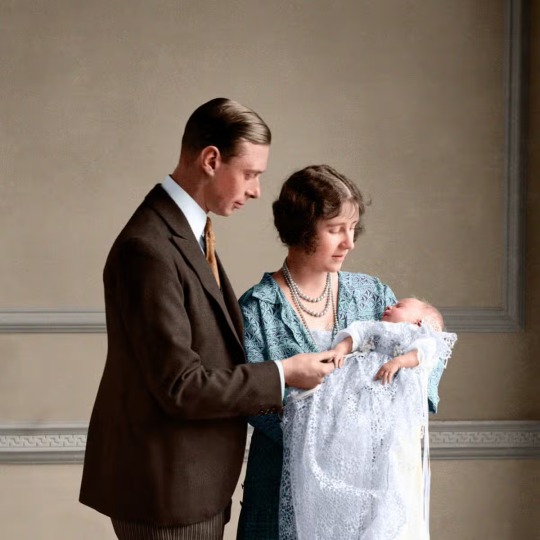
On this day….
In 1926, at 2.40am at 17 Bruton Street in Mayfair, Princess Elizabeth Alexandra Mary of York was born.
100 notes
·
View notes
Text

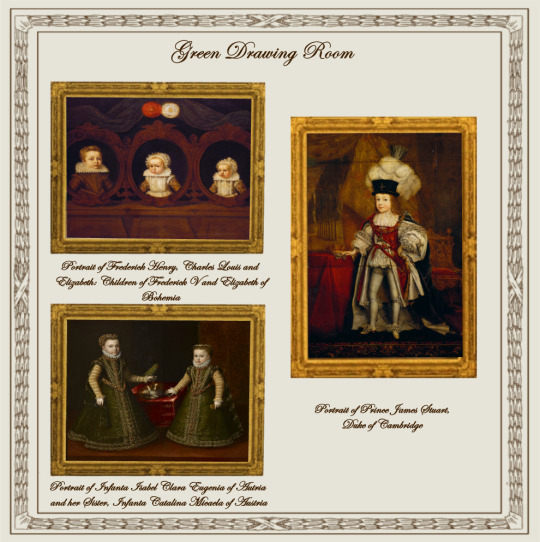
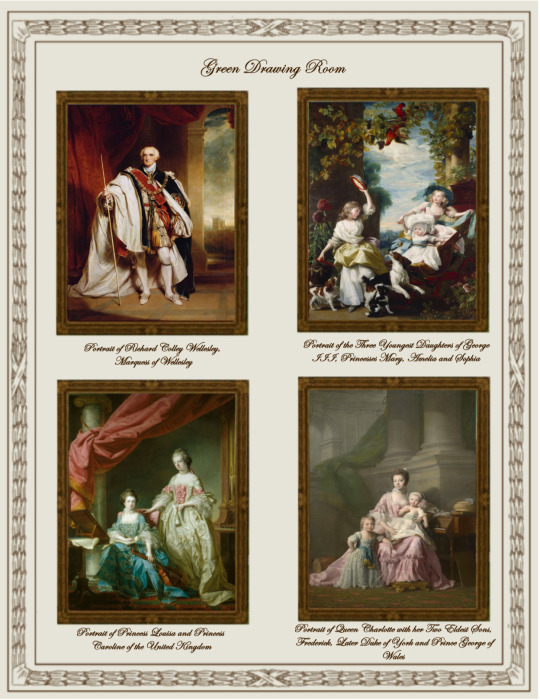
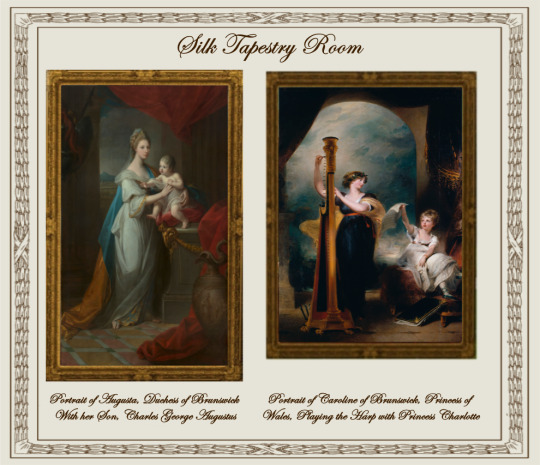
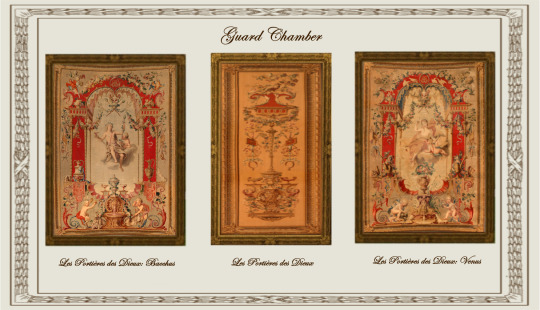

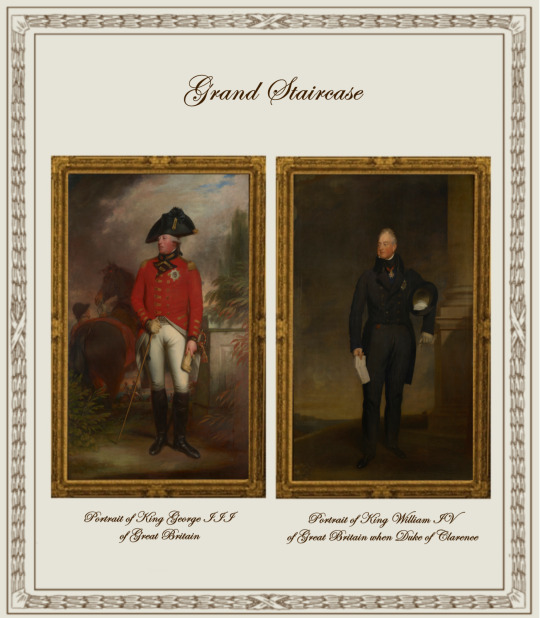
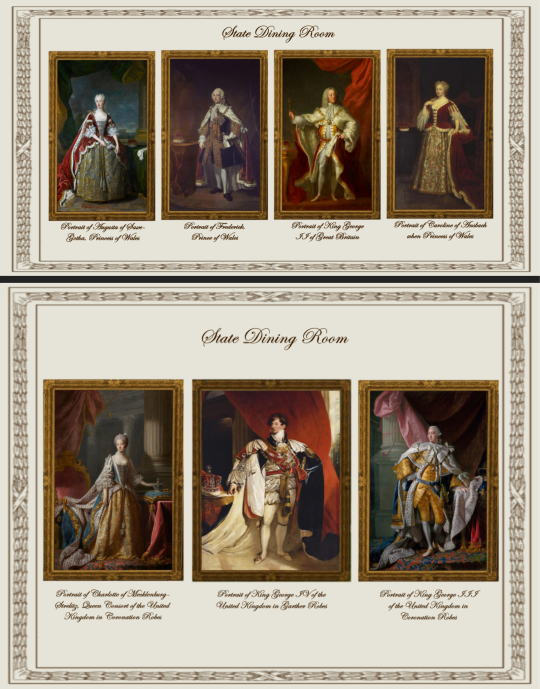
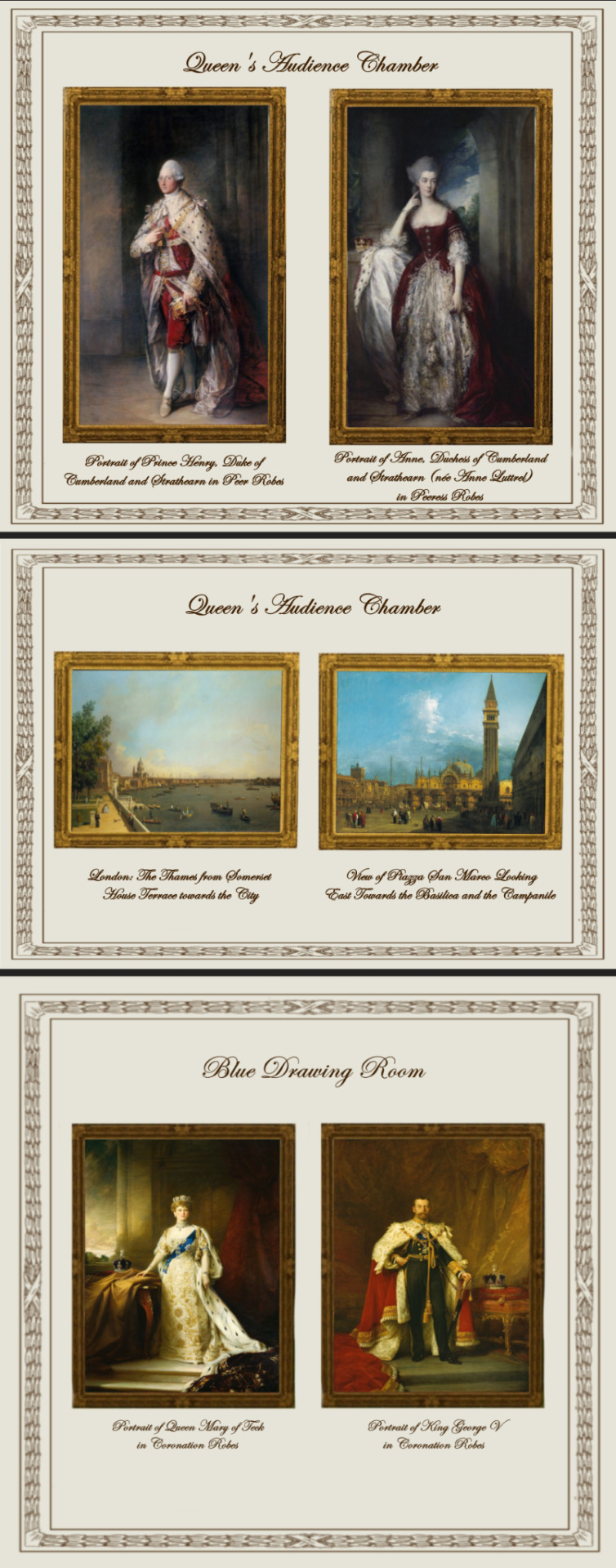
Paintings from Buckingham Palace: part I
A retexture by La Comtesse Zouboff — Original Mesh by @thejim07
100 followers gift!
First of all, I would like to thank you all for this amazing year! It's been a pleasure meeting you all and I'm beyond thankful for your support.
Spread among 13 occupied and historic royal residences in the United Kingdom, the collection is owned by King Charles III and overseen by the Royal Collection Trust. The British monarch owns some of the collection in right of the Crown and some as a private individual. It is made up of over one million objects, including 7,000 paintings, over 150,000 works on paper, this including 30,000 watercolours and drawings, and about 450,000 photographs, as well as around 700,000 works of art, including tapestries, furniture, ceramics, textiles, carriages, weapons, armour, jewellery, clocks, musical instruments, tableware, plants, manuscripts, books, and sculptures.
Some of the buildings which house the collection, such as Hampton Court Palace, are open to the public and not lived in by the Royal Family, whilst others, such as Windsor Castle, Kensington Palace and the most remarkable of them, Buckingham Palace are both residences and open to the public.
About 3,000 objects are on loan to museums throughout the world, and many others are lent on a temporary basis to exhibitions.
-------------------------------------------------------
This first part includes the paintings displayed in the White Drawing Room, the Green Drawing Room, the Silk Tapestry Room, the Guard Chamber, the Grand Staircase, the State Dining Room, the Queen's Audience Room and the Blue Drawing Room,
This set contains 37 paintings and tapestries with the original frame swatches, fully recolourable. They are:
White Drawing Room (WDR):
Portrait of François Salignan de la Mothe-Fénelon, Archbishop of Cambrai (Joseph Vivien)
Portrait of a Lady (Sir Peter Lely)
Portrait of a Man in Armour with a red scarf (Anthony van Dyck)
Portrait of Alexandra of Denmark, Queen Consort of the United Kingdom and Empress of India (François Flameng)
Green Drawing Room (GDR):
Portrait of Prince James Stuart, Duke of Cambridge (John Michael Wright)
Portrait of Frederick Henry, Charles Louis and Elizabeth: Children of Frederick V and Elizabeth of Bohemia (unknown)
Portrait of Infanta Isabel Clara Eugenia of Autria and her Sister, Infanta Catalina Micaela of Austria (Alonso Sanchez Coello)
Portrait of Princess Louisa and Princess Caroline of the United Kingdom (Francis Cotes)
Portrait of Queen Charlotte with her Two Eldest Sons, Frederick, Later Duke of York and Prince George of Wales (Allan Ramsay)
Portrait of Richard Colley Wellesley, Marquess of Wellesley (Martin Archer Shee)
Portrait of the Three Youngest Daughters of George III, Princesses Mary, Amelia and Sophia (John Singleton Copley)
Silk Tapestry Room (STR):
Portrait of Caroline of Brunswick, Princess of Wales, Playing the Harp with Princess Charlotte (Sir Thomas Lawrence)
Portrait of Augusta, Duchess of Brunswick With her Son, Charles George Augustus (Angelica Kauffmann)
Guard Chamber (GC):
Les Portières des Dieux: Bacchus (Manufacture Royale des Gobelins)
Les Portières des Dieux: Venus (Manufacture Royale des Gobelins)
Les Portières des Dieux (Manufacture Royale des Gobelins)
Grand Staircarse (GS):
Portrait of Adelaide of Saxe-Meiningen, Queen Consort of Great Britain (Martin Archer Shee)
Portrait of Augustus, Duke of Sussex (Sir David Wilkie)
Portrait of Edward, Duke of Kent (George Dawe)
Portrait of King George III of Great Britain (Sir William Beechey)
Portrait of King William IV of Great Britain when Duke of Clarence (Sir Thomas Lawrence)
Portrait of Leopold I, King of the Belgians (William Corden the Younger)
Portrait of Prince George of Cumberland, Later King George V of Hanover When a Boy (Sir Thomas Lawrence)
Portrait of Princess Charlotte Augusta of Wales (George Dawe)
Portrait of Queen Charlotte at Frogmore House (Sir William Beechey)
Portrait of Victoria of Saxe-Coburg-Saafeld, Duchess of Kent (Sir George Hayter)
State Dining Room (SDR):
Portrait of Charlotte of Mecklenburg-Strelitz, Queen Consort of the United Kingdom in Coronation Robes (Allan Ramsay)
Portrait of King George III of the United Kingdom in Coronation Robes (Allan Ramsay)
Portrait of Augusta of Saxe-Gotha, Princess of Wales (Jean-Baptiste Van Loo)
Portrait of Caroline of Ansbach when Princess of Wales (Sir Godfrey Kneller)
Portrait of Frederick, Princes of Wales (Jean-Baptiste Van Loo)
Portrait of King George II of Great Britain (John Shackleton)
Portrait of King George IV of the United Kingdom in Garther Robes (Sir Thomas Lawrence)
Queen's Audience Room (QAR):
Portrait of Anne, Duchess of Cumberland and Strathearn (née Anne Luttrel) in Peeress Robes (Sir Thomas Gainsborough)
Portrait of Prince Henry, Duke of Cumberland and Strathearn in Peer Robes (Sir Thomas Gainsborough)
London: The Thames from Somerset House Terrace towards the City (Giovanni Antonio Canal "Canaletto")
View of Piazza San Marco Looking East Towards the Basilica and the Campanile (Giovanni Antonio Canal "Canaletto")
Blue Drawing Room (BDR)
Portrait of King George V in Coronation Robes (Sir Samuel Luke Fildes)
Portrait of Queen Mary of Teck in Coronation Robes (Sir William Samuel Henry Llewellyn)
-------------------------------------------------------
Found under decor > paintings for:
500§ (WDR: 1,2 & 3)
1850§ (GDR: 1)
1960§ (GDR: 2 & 3 |QAR 3 & 4)
3040§ (STR, 1 |GC: 1 & 2|SDR: 1 & 2)
3050§ (GC:1 |GS: all 10|WDR: 4 |SDR: 3,4,5 & 6)
3560§ (QAR: 1 & 2|STR: 2)
3900§ (SDR: 7| BDR: 1 & 2|GDR: 4,5,6 & 7)
Retextured from:
"Saint Mary Magdalene" (WDR: 1,2 & 3) found here .
"The virgin of the Rosary" (GDR: 1) found here .
"The Four Cardinal Virtues" (GDR: 2&3|QAR 3 & 4) found here.
"Mariana of Austria in Prayer" (STR, 1, GC: 1 & 2|SDR: 1 & 2) found here.
"Portrait of Philip IV with a lion at his feet" (GC:1 |GS: all 10|WDR: 4 |SDR: 3,4,5 & 6) found here
"Length Portrait of Mrs.D" (QAR: 1 & 2|STR: 2) found here
"Portrait of Maria Theresa of Austria and her Son, le Grand Dauphin" (SDR: 7| BDR: 1 & 2|GDR: 4,5,6 & 7) found here
(you can just search for "Buckingham Palace" using the catalog search mod to find the entire set much easier!)
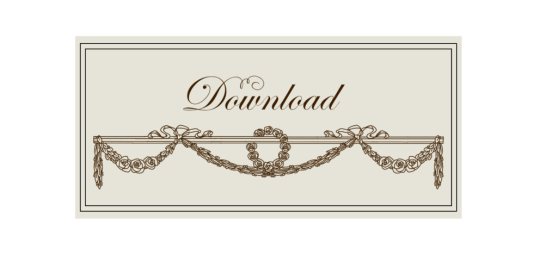
Drive
(Sims3pack | Package)
(Useful tags below)
@joojconverts @ts3history @ts3historicalccfinds @deniisu-sims @katsujiiccfinds @gifappels-stuff
-------------------------------------------------------
#the sims 3#ts3#s3cc#sims 3#sims 3 cc#sims 3 download#sims 3 decor#edwardian#rococo#baroque#renaissance#buckingham#buckingham palace#royal collection trust#wall decor
118 notes
·
View notes
Text

Wood Farm, Sandringham Estate

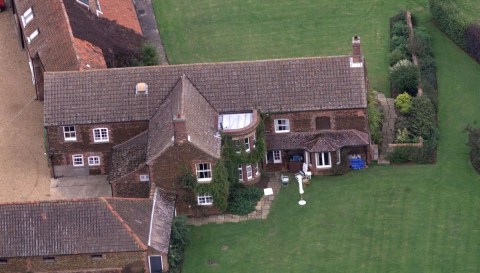

Wood Farm is a farmhouse on the British Royal Family's Sandringham Estate in Norfolk, England. Historically occupied by members of the Royal Family and their guests, the house was a long favourite of Elizabeth II. From his retirement in 2017, the house was home to Prince Philip, Duke of Edinburgh.
Wood Farm is a five-bedroom cottage located in a secluded part of the Sandringham Estate, overlooking the sea. It has been described as a “comfortable open beamed cottage two miles from the ‘big house’”. The house is half a mile from the Wolferton railway station and is located near the stables and pheasant shooting grounds.[1] Prince Philip, Duke of Edinburgh, reportedly decorated the walls with his own art, redesigned the kitchen and bedrooms.
In 1904, the farmhouse was referred to as “Marsh Farm" by local residents. King George V and Queen Mary sent their youngest son, Prince John, who suffered from epileptic seizures to reside at Wood Farm in 1917. He tended to a garden alongside a flock of chickens, occasionally receiving Queen Alexandra as a visitor before his death in 1919. The cottage was subsequently rented out for a number of years, including to James Ansell, the royal family's physician, before his retirement in the 1960s.
Elizabeth II and her family began using Wood Farm in 1967. Prince Philip chose the cottage for the family or guests to stay in without the huge staff or costs presented by the main house. Staff have been reported to not wear uniforms at the cottage. The Queen has also been described to have cooked and done the dishes while in residence. Charles III, when Prince of Wales, began to host shooting parties at Wood Farm during his college years, and continued to use it as a country retreat in adulthood.
The cottage is also a guest house for visitors who want "complete privacy". Diana, Princess of Wales, stayed at the farm with the Queen during a shooting party before her engagement. Divorced spouses of royals such as Sarah, Duchess of York are often put up at Wood Farm during holiday periods so they can be close to royal children without officially being at the Queen's festive holiday celebrations at Sandringham House. Catherine, Princess of Wales, stayed at the cottage during her visits to Sandringham early in her relationship with William, Prince of Wales. The couple reportedly continued to host shooting parties at Wood Farm after their marriage.
After his retirement, Prince Philip, Duke of Edinburgh lived at Wood Farm. He was often visited by the Queen, and reportedly ran a truffle farm on the grounds of the cottage.
- Wikipedia
97 notes
·
View notes
Text
On this day in 1926
A Queen Born


21st April 1926. The Duchess of York gave birth to her firstborn Elizabeth Alexandra Mary at 17 Bruton Street in Mayfair, London, which was the home of the Earl and Countess of Strathmore, the Duchess's parents.
86 notes
·
View notes
Text
Anne Elizabeth Alice Louise: The Only Daughter

Her father was:
Prince Philip, Duke of Edinburgh (born 'Φίλιππος' / Philippos Andreou of Schleswig-Holstein-Sonderberg-Glücksburg, Prince of Greece and Denmark, later Philip Mountbatten)

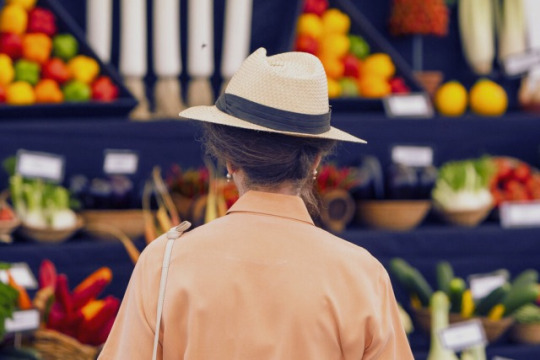

Anne's happiness is one of the most important things in Prince Philip's life; and he can deny her nothing. He has never been less than delighted with his only daughter, who has remained close and become increasingly dear to him as time has passed. (Prince Philip’s bond with his only daughter)
"You know it’s going to happen but you are never really ready. My father has been my teacher, my supporter and my critic, but mostly it is his example of a life well lived and service freely given that I most wanted to emulate.
His ability to treat every person as an individual in their own right with their own skills comes through all the organisations with which he was involved. I regard it as an honour and a privilege to have been asked to follow in his footsteps and it has been a pleasure to have kept him in touch with their activities.
I know how much he meant to them, in the UK, across the Commonwealth and in the wider world. I would like to emphasise how much the family appreciate the messages and memories of so many people whose lives he also touched. We will miss him but he leaves a legacy which can inspire us all."
(A message from The Princess Royal following the death of her father, The Duke of Edinburgh, released 11 April 2021)
Her mother was:
Elizabeth II, Queen of the United Kingdom and other Commonwealth realms (born Her Royal Highness Princess Elizabeth Alexandra Mary of York)


Princess Anne and the Queen have always been the closest a mother and daughter can be, except perhaps on those occasions when Anne has been in one of her moods. But now they became even closer. The Queen wanted Anne to be the one at her side, and apparently found difficulty in discussing it in any real detail with anyone other than her daughter. In the remaining few days before the Royals began their summer holidays, Anne gave up as much time as she could to stay with the Queen, and joined her as well at the family’s summer home at Balmoral. It was Anne’s presence that helped give the Queen her outwardly untroubled attitude. (Queen Elizabeth II and Princess Anne’s closeness following the Michael Fagan incident in 1982)
"I was fortunate to share the last 24 hours of my dearest Mother’s life. It has been an honour and a privilege to accompany her on her final journeys. Witnessing the love and respect shown by so many on these journeys has been both humbling and uplifting.
We will all share unique memories. I offer my thanks to each and every one who share our sense of loss.
We may have been reminded how much of her presence and contribution to our national identity we took for granted. I am also so grateful for the support and understanding offered to my dear brother Charles as he accepts the added responsibilities of The Monarch.
To my mother, The Queen, thank you."
(A statement from The Princess Royal following the death of her mother, Her Majesty The Queen, released 13 September 2022)
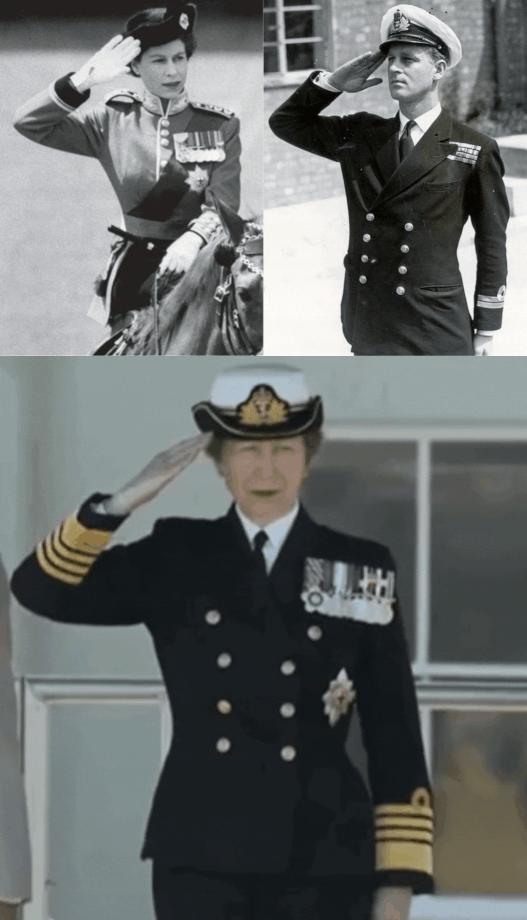
#tortured myself when i decided to make this#i was literally ugly crying#my tribute to my og otp#my fave trio#princess anne#anned mum#queen elizabeth ii#papa's wingman#prince philip#from a fanne
182 notes
·
View notes
Text
Tiara Predictions: Japan to United Kingdom
Emperor Naruhito and Empress Masako will be in the UK on 25th to 27th July for a State Visit. The trip will focus on Japanese-British diplomacy, history, biomedical research, museums and biodiversity.
And now to the predictions…


The tiara I want Masako to wear: Imperial Chrysanthemum Tiara. This tiara is reserved for the Empress and Masako is yet to wear it so it’d be lovely if she debuted it today. It was last worn by Empress Emerita, Michiko in January 2012 for the New Year’s Reception.
My prediction: Meiji Scroll Tiara. Masako has only worn this tiara since becoming Empress so it’s a fairly safe bet. It was last worn by Masako in January for the New Year’s Reception.


The tiara I want Camilla to wear: Queen Alexandra’s Kokoshnik. I need this tiara to be worn! So stunning, it’s literally a wall of diamonds and I have a feeling it would suit Camilla so much. It was last worn by Queen Elizabeth in March 2015 for the State Visit from Mexico.
My prediction: Oriental Circlet Tiara. The only tiara that was designed by Prince Albert that still belongs to the British Royal Family (and my personal least favourite), I think this would be a suitable tiara for the State Banquet as it’s suitably large, historic and ornate for a visit from the Emperor. It was last worn by Queen Elizabeth in 2006 on a visit to Malta.


The tiara I want Sophie to wear: Aquamarine Ribbon Tiara. I will admit that I haven’t liked the way that Sophie has styled this tiara in the past so I just want to see it with big hair at the front to hide the gap or for Sophie to have re-worked it. It was last worn in October 2018 for the Dutch State Visit.
My prediction: Her wedding tiara. I’ve mostly chosen non-colourful tiaras for everyone else so Sophie’s only all diamond tiara matches that. It was last worn in June 2019 for the State Visit from the US.


The tiara I want Birgitte to wear: Iveagh Tiara. My favourite Gloucester tiara. Aside from Queen Victoria’s Sapphire Tiara, this tiara is probably the one that I wish Queen Mary would’ve kept within the main family line. It was last worn by Birgitte at the CHOGM reception in 2018.
My prediction: Cartier Indian Tiara. This tiara is large, sparkly and will suit the other tiaras on display. It was last worn by Birgitte in November 2022 for the State Visit from South Africa.






While I don’t think any of the following will be at the banquet, in the unlikely event that one of them does attend my predictions are as follows:
Catherine, the Princess of Wales: Lotus Flower Tiara (but I’d love it if she wore the Sapphire Sunburst Bandeau)
Princess Beatrice: York Tiara
Princess Eugenie: Greville Emerald
Princess Alexandra: Ogilvy Tiara
Princess Michael of Kent: Kent Festoon
#tiara predictions#queen camilla#empress masako#princess anne#duchess of edinburgh#countess of wessex#duchess of gloucester#princess of wales#duchess of cambridge#princess beatrice#princess eugenie#british royal family#japanese imperial family#princess alexandra#princess michael of kent
6 notes
·
View notes
Text

"Arms are so difficult to draw"...
While the Duke and Duchess of York (the future King George V and Queen Mary) were away on a royal tour in 1901, King Edward VII and Queen Alexandra commissioned an artist, Mrs. Gertrude Massey, to paint miniature portraits of their children, David, Bertie, Mary and Harry, as surprise gifts for them on their return. Mrs. Massey spent a lot of time with the children and got to know them well, and they became very fond of her.
In her memoir, Kings, Commoners and Me (1934), Massey described each of the children. She saw Prince Edward (David) as the "the most interesting" and Princess Mary as "the most mischievous".
As for little Bertie, she related a story of how one day he asked if he could draw her, "for a change", and she obliged him. As he drew, she observed "His face was so expressive, one could almost read his thoughts." His expression showed that he was pleased with his drawing, except for one thing.
"Would you mind if I don't give you any arms?'' he asked. "Arms are so difficult to draw."
Aw, Bertie!!! <3
I enjoy reading about these little moments throughout his life when Bertie's creative side would shyly show itself. I think he did have a creativity about him; he just didn't really get a lot of opportunity to explore it. Although he was never interested in fine arts and culture the way his younger brother the Duke of Kent was, I think he enjoyed designing and creating and was proud of these accomplishments in his humble way.
For instance, he loved landscape gardening, (once he wrote a letter in the "language of Rhododendrum"!). He did needlepoint, and created a set of 12 chair covers for Royal Lodge. He also designed the George Cross and George Medal himself. And of course there was his life long interest in photography and filming, which I can particularly relate to and understand. Even during his last Sandringham Christmas, King George designed trousers to be worn with the Order of the Garter robes instead of the traditional knee pants and Prince Philip photographed him wearing them. It has been repeated often that when he got interested in something, he was all in! That is the essence of a creative spirit, in my eyes.
What a sweet, sensitive soul.
Sources: Kings, Commoners and Me (1934) by Gertrude Massey; George and Elizabeth, A Royal Marriage (1983) by David Duff; Bonhams; The Royal Collection Trust
#bertie the artist#bertie's expressive face#sweet little bertie#king george vi#prince albert#prince bertie#king bertie#george vi#Prince Edward#Princess Mary#Gertrude Massey#david & bertie#bertie & elizabeth#british royal family#art#young royals
19 notes
·
View notes
Text
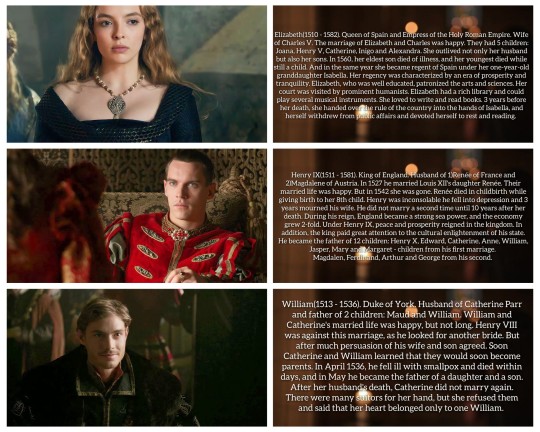

AU House of Tudors: Children Henry VIII and Catherine of Aragon.
Catherine of Aragon(1485 - 1543).In 1501 Catherine of Aragon became the wife of Prince Arthur, but he died half a year later. In 1509 she married Henry VIII. Their married life was happy despite the fact that Catherine was 6 years older than Henry. She also often took an active part in the affairs of state. The marriage produced 6 children. The death of Prince William undermined Catherine's health and because of this she began to have frequent heart aches. She died in 1543 of heart disease.
Elizabeth(1510 - 1582). Queen of Spain and Empress of the Holy Roman Empire. Wife of Charles V. The marriage of Elizabeth and Charles was happy. They had 5 children: Joana, Henry V, Catherine, Inigo and Alexandra. She outlived not only her husband but also her sons. In 1560, her eldest son died of illness, and her youngest died while still a child. And in the same year she became regent of Spain under her one-year-old granddaughter Isabella. Her regency was characterized by an era of prosperity and tranquility. Elizabeth, who was well educated, patronized the arts and sciences. Her court was visited by prominent humanists. Elizabeth had a rich library and could play several musical instruments. She loved to write and read books. 3 years before her death, she handed over the rule of the country into the hands of Isabella, and herself withdrew from public affairs and devoted herself to rest and reading.
Henry IX(1511 - 1581). King of England. Husband of 1)Renée of France and 2)Magdalene of Austria. In 1527 he married Louis XII's daughter Renée. Their married life was happy. But in 1542 she was gone. Renée died in childbirth while giving birth to her 8th child. Henry was inconsolable he fell into depression and 3 years mourned his wife. He did not marry a second time until 10 years after her death. During his reign, England became a strong sea power, and the economy grew 2-fold. Under Henry IX, peace and prosperity reigned in the kingdom. In addition, the king paid great attention to the cultural enlightenment of his state.
He became the father of 12 children: Henry X, Edward, Catherine, Anne, William, Jasper, Mary and Margaret - children from his first marriage.
Magdalen, Ferdinand, Arthur and George from his second.
William(1513 - 1536). Duke of York. Husband of Catherine Parr and father of 2 children: Maud and William. William and Catherine's married life was happy, but not long. Henry VIII was against this marriage, as he looked for another bride. But after much persuasion of his wife and son agreed. Soon Catherine and William learned that they would soon become parents. In April 1536, he fell ill with smallpox and died within days, and in May he became the father of a daughter and a son. After her husband's death, Catherine did not marry again. There were many suitors for her hand, but she refused them and said that her heart belonged only to one William.
Edmund(1514 - 1588). Duke of Somerset. Husband of Dorothea of Denmark, father of 6 children: William, Catherine, Henry, Mark, Isabella and Christian. Edmund was not in love with his wife. The first years of their marriage the couple lived amicably and were attached to each other, and when misunderstandings began between them, they were of a financial nature. The duke did not like the excessive spending of his wife. Because of frequent quarrels, they began to distance themselves from each other. And after the birth of the last child Edmund finally turned away from his wife. Edmund, like his older sister, was a patron of culture and art.
Mary(1516 - 1570). Queen of Scots. Wife of James V. She was the favorite daughter of Henry VIII. At first the Scots did not want to recognize Mary as their queen, but later she quickly won the trust of the people. She also enjoyed the trust of her husband, who often left her as regent during his absence. The spouses were an example of family life, the king was never seen for public adultery. The marriage produced 5 children: Margaret, James VI, David, Robert and Catherine.
Isabella(1518 - 1585). Queen of Poland. Wife of Sigismund II and mother of 8 children: Bona, Sigismund III, Casimir, Jadwiga, Wladyslaw, Jagailo, Catherine and Stanislaw. Isabella was famous for her beauty, distinguished by her intelligence and great energy. But there was no happiness in her life. Isabella's marriage was not a happy one. The queen unrequitedly loved her husband, but the king preferred to lead a dissolute lifestyle. The king's mother feared that Isabella would influence her son and turned Sigismund against her. The king and queen had 8 children, but only one boy survived. Isabella tried to exert political influence on her son, but her attempts were unsuccessful. Because of her disagreement with her son, she returned to her homeland.
AU Дом Тюдоров:Дети Генриха VIII и Екатерины Арагонской.
Екатерина Арагонская(1485 - 1543). В 1501 году Екатерина Арагонская стала женой принца Артура, но через пол года он умер. В 1509 она вышла замуж за Генриха VIII. Их супружеская жизнь была счастливой несмотря на то, что Екатерина была старше Генриха на 6 лет. Также она часто принимала активное участие в делах государства. В браке родилось 6 детей. Смерть принца Уильяма подкосило здоровье Екатерины и из-за этого у неё стало часто болеть сердце. Умерла в 1543 году от сердечной болезни.
Елизавета(1510 - 1582). Королева Испании и императрица Священной Римской империи. Жена Карла V. Брак Елизаветы и Карла был счастливым. У них родилось 5 детей: Хуана, Энрике V, Екатерина, Иниго и Алехандра. Пережила не только мужа, но и своих сыновей. В 1560 году от болезни умер ее старший сын, а младший умер ещё в детстве. И в этом же году она стала регентом Испании при своей годовалой внучке Изабелле. Её регенство характерезуится эпохой процветания и спокойствия. Елизавета, получившая хорошее образование покровительствовала искусствам и наукам. Её двор посещали выдающиеся гуманисты. У Елизаветы была богатая библиотека, а также она умела играть на нескольких музыкальных инструментах. Любила писать и читать книги. За 3 года до своей смерти вручила правление страной в руки Изабелле, а сама отошла от государственных дел и посвятила себя отдыху и чтению.
Генрих IX(1511 - 1578). Король Англии. Муж 1)Рене Французской и 2)Магдалины Австрийской. В 1527 году женился на дочери Людовика XII Рене. Их супружеская жизнь была счастливой. Но 1542 году её не стало. Рене умерла при родах, рожая 8 ребёнка. Генрих был безутешен он впал в депрессию и 3 года оплакивал жену. Женился во второй раз только через 10 лет после её смерти. В период его правления Англия стала сильной морской державой, а также в 2 раза увеличился рост экономики. При Генрихе IX в королевстве царил мир и процветание. Кроме этого, король уделял большое внимание культурному просвещению своего государства.
Стал отцом 12 детей: Генрих X, Эдуард, Екатерина, Анна, Уильям, Джаспер, Мария и Маргарита - дети от первого брака.
Магдалена, Фердинанд, Артур и Джордж - от второго.
Уильям(1513 - 1536). Герцог Йоркский. Муж Екатерины Парр и отец 2 детей: Мод и Уильям. Супружеская жизнь Уильяма и Екатерины был счастливой, но не долгой. Генрих VIII был против этого брака, так как подыскал ему другую невесту. Но после долгих уговоров жены и сына согласился. Вскоре Екатерина и Уильям узнали, что скоро станут родителями. В апреле 1536 года он заболел оспой и умер в течение нескольких дней, а в мае стал отцом дочери и сына. После смерти мужа Екатерина больше замуж не вышла. Было много претендентов на её руку, но она им отказывала и говорила, что её сердце принадлежит лишь одному Уияльму.
Эдмунд(1514 - 1588). Герцог Сомерсет. Муж Доротеи Датской, отец 6 детей: Уильям, Екатерина, Генрих, Марк, Изабелла и Кристиан. Эдмунд не был влюблен в свою жену. Первые годы брака супруги жили дружно и были привязаны друг к другу, а когда между ними начались недоразумения, то они носили финансовый характер. Герцогу не нравились чрезмерные расходы жены. Из-за частых ссор они стали отдаляться друг от друга. А после рождения последнего ребёнка Эдмунд окончательно отвернулся от жены. Эдмунд, как и его старшая сестра был покровителем культуры и искусства.
Мария(1516 - 1570). Королева Шотландии. Жена Якова V. Была любимой дочерью Генриха VIII. Поначалу шотландцы не хотели признавать Марию своей королевой, но позже она быстро завоевала доверие народа. Также она пользовалась доверием своего мужа, который часто оставлял её регентом на время своего отсутствия. Супруги были примером семейной жизни, король ни разу не был замечен за публичным изменами. В браке родилось 5 детей: Маргарита, Яков VI, Давид, Роберт и Екатерина.
Изабелла(1518 - 1585). Королева Польши. Жена Сигизмунда II и мать 8 детей: Бона, Сигизмунд III, Казимир, Ядвига, Владислав, Ягайло, Екатерина и Станислав. Изабелла славилась своей красотой, отличалась умом и большой энергией. Но счастья в её жизни не было. Брак Изабеллы был не счастливым. Королева безответно любила своего мужа, но король предпочитал вести разгульный образ жизни. Мать короля опасалась того, что Изабелла будет оказывать влияние на сына и настраивала Сигизмунда против неё. У короля и королевы было 8 детей, но выжил лишь один мальчик. Изабелла пыталась оказывать политическое влияние на своего сына, но её попытки остались без успешны. Из за разногласий с сыном она вернулась на Родину.
#history#history au#royal family#royalty#au#henryviii#mary tudor#british royal family#british royalty#British king#British queen#history of england#british history#english#english history#england#elizabeth of york#henry viii#Marytudor#marytudor#english royalty#royals#royal#16th century#britishroylsfamily#britishroyal#charles brandon#henry cavill#isabellaofcastile#jonathan rhys meyers
13 notes
·
View notes
Text

[billy crudup — 54 — he/him] Introducing LAURIE ELLINGHAM. Word on the street is they are a CON ARTIST & THIEF, having been around for 34 YEARS. Though they are DISHONEST and CUNNING, they can also be RESOURCEFUL and OBSERVANT. In the chaos of New York City, they’re sure to fit right in.



basics
• full name: florian henry morganthal
• aliases: laurie ellingham (the name he goes by on a day-to-day basis) ; daniel seward ; vincent lanyon ; frank grey ; liam wilson ; jesse crane
• nicknames: laurie (preferred name) ; harry
• gender: cis male
• pronouns: he/him
• age: 54
• date of birth: 24th august 1970
• zodiac sign: virgo
• sexuality: bisexual (female leaning)
• place of birth: austin, texas, usa
• residence: a one bedroom apartment in brooklyn, nyc
• occupation: con-artist ; thief
• affiliation: n/a
• aesthetics: three piece suits, whisky on the rocks, leather brogues, aviator sunglasses, a log burning fire, black coffee, worn books, fog on a winter’s day, ink stained fingers
appearance
• faceclaim: billy crudup
• voice claim: billy crudup
• height: 5’ 10”
• build: average ; a little skinny
• eyes: brown
• hair: dark brown, almost black; greying at the temples
• piercings: n/a
• tattoos: n/a
• style:

personality
• positive traits: charming, resourceful, articulate, confident, resilient, observant
• negative traits: reserved, manipulative, flirtatious, devious, dishonest
• mbti: estp - the entrepreneur
• likes: listening to music, collecting vintage books, watching films, spicy food, parties
• dislikes: bitter foods, summer, beer, seafood, sci-fi, prejudice
• fears: being exposed as a thief and a fraud
• phobias: entomophobia
• hobbies: reading, photography, playing the piano, watching baseball
• skills: bilingual (speaks fluent english & german) ; ambidextrous (favours his right hand) ; deft at lock picking ; can quickly pick up and imitate accents
• pet peeves: loud chewing, being interrupted, slow walkers, poor grammar
family
• mother: nancy alexandra morganthal (née harrison)
• father: mitchell robert morganthal
• step mother: katherine marie morgahthal (née gilbert)
• siblings: sebastian james morganthal (younger half-brother)
• paternal grandfather: henry john morganthal
• paternal grandmother: yvette elizabeth morganthal (née waters)
favourites
• food: spicy buffalo wings
• drink: whisky
• time of the day: night
• weather: dry and cold
• colours: blue, grey
• music: anything rock, alternative, classical, and blues
bio
— laurie was born at 5:55am on 24th august 1970 in austin, texas, to mitchell morganthal, a dentist, and his wife nancy, a hairdresser. he was named henry after his paternal grandfather. he also has a younger half-brother from his father’s second marriage.
— he was known as henry growing up, with the affectionate nickname harry to differentiate from his grandfather, but neither really felt right to him. it was only when he turned 18 and started his new life that he began to be known as laurie: a name which almost separated him from his youth and the life he left behind.
— his parents’ marriage had always been rocky and they both hoped that having charlie would help them. it did for a while, but that was only up until laurie was 5 years old, which was when his mother found out her husband was having an affair. furious and heartbroken, she filed for divorce and ensured she got what was owed to her financially before moving herself and laurie two hours west of austin to live a quieter life in the country. the thing that he hated most about texas was the intensely hot summers and his childhood dream became that he wanted to see snow in person.
— laurie was neither good nor bad in school. he had his fair share of trouble from other students and causing it for the teachers, but he always had fairly good grades, doing the best in physical education, english, and history. he grew up as a fan of baseball (supporting the texas rangers and later the new york mets) and went to both the library and cinema as often as he could.
— he began to steal things when he was 15, firstly from classrooms and then from other students, simply because he could and because he found amusement in watching other people look confused and get irate over their 'lost' items. most of the time he returned the items after a few days or weeks, but some he kept, including jewellery, money, and expensive stationery.
— laurie’s mother died when he was 18, just before he was due to graduate from high school. after not seeing his father in 12 years, he came to laurie’s graduation and brought his wife and son with him. seeing mitchell gave laurie some hope and reassurance, but he seemed very distant and gave sebastian most of the attention despite the day belonging to laurie. laurie then decided to sever ties with his father completely and hoped he would never see him or edward ever again.
— he ended up selling his mother’s house and taking the money with him to new york city. the move was on a whim, but felt confident enough to go with having friends moving there too for college. he couch surfed for several months before earning enough money with a barista job to rent his own apartment. laurie loved how much cooler the city was throughout the year and was thrilled to see snow for the first time just six months after moving.
— with no qualifications other than a high school diploma, it was more difficult for charlie to get a ‘proper’ job that he initially thought. along with the barista job, he got a job waiting tables and bartending at an upscale restaurant in tribeca where he was able to observe and interact with people who didn’t know what to do with their money other than flaunt it.
— it was during this time that laurie had the idea to manipulate and influence the richer members of new york society into giving him money. it started off with increasing the tips he received at work, but eventually he came up with more ingenious ways to make money. laurie adopted the alias daniel seward and patiently began the process of integrating himself in the lives of a rich young couple from soho; he sold himself as an architect and became their friends, knew the ins and out of their personal and professional lives, and eventually managed to swindle them out of $30,000 after convincing them in invest in his non-existent apartment complex project. the story made the news, but luckily the police couldn’t find any trace of daniel seward, so with great pride laurie found himself in the clear and a lot richer.
— at this point, and when he wasn’t pretending to be daniel seward, he decided to drop the name morganthal and start calling himself laurie ellingham. he introduced himself to everybody as such, but over time also developed other aliases, all of which are named after fictional doctors: daniel seward (john seward from dracula), vincent lanyon (hastie lanyon from the strange case or dr jekyll and mr hyde), frank grey (meredith grey from grey’s anatomy), charlie ellingham (martin ellingham from doc martin), liam wilson (james wilson from house md), and jesse crane (frasier crane from frasier). the persona belonging to each alias has extensive backstory, unique quirks, and some even have different accents.
— laurie works as a lone wolf and usually preys upon richer people who aren’t in the media so there’s less attention drawn to his actions. but every now and then he likes to try his luck and more often than not succeeds. he also likes to track down a certain calibre of person, like a deadbeat dad who owes his ex wife alimony payments for his children and after conning him out of the money laurie will send it anonymously to the ex wife. in this kind of situation he sees himself as something of a robin hood figure and he also doesn’t believe that the rich should hoard their wealth when there is people suffering and starving from lack of financial resources.
5 notes
·
View notes
Note
among her daughters-in-law alice duchess of gloucester, queen mother aka duchess of york, princess marina duchess of kent.
with whom she had the best relationship?
i know she disliked simposon duchess of windsor
Hi @abigaaal !
You are certainly correct! I think we can all agree without a shred of doubt that QM did NOT like Wallis Simpson!
As for the rest of her daughters-in-law I do believe she liked and got on well with all of them. I know Elizabeth and Alice referred to QM as ‘darling Mama’ though I have not seen Marinas letters, and I think referring to your mother-in-law as ‘mama’ in such high society circles was fairly common. I know Princess Mary also referred to her own M-I-L in such fashion, as did QM with Queen Alexandra.
From what I have read, my opinion is that Alice of Gloucester was her favourite, followed by Elizabeth then Marina - however I think the margin between all of them was very small. She had things in common with all them though I think she found Alice the most down-to-earth.
She had certainly known Elizabeth the longest as she married Bertie in 1923, and Alice and Marina didn’t appear on the scene until the early to mid 1930s respectively. Elizabeth as I understand it was the undisputed favourite of George V, though this may be because he died so early into the marriages of his two younger sons. Though in the days Bertie was proposing to Elizabeth (3 times!! so yes I do mean days - if not months and years) QM as I understand was very very keen for Elizabeth to say yes as she thought she’d be a fantastic match for Bertie. And much later on she knew undoubtedly that Elizabeth would be a wonderful Queen.
We know Alice and QM were close only I think because of the memoir written by Alice (which is FABULOUS btw - if you haven’t read it I would absolutely recommend it). Marina however doesn’t have the luxury of being as well written about unlike her sisters-in-law, with one being a Queen of England and the other as I’ve mentioned writing her own story, though by all means Alice was still discreet. So when it comes to Marina I’m afraid we know a little less about her relationship with QM. I also have to confess I’m not much of an expert when it comes to Marina, if anyone else has any light to shed on it please do comment!
Ultimately, I think she liked each D-I-L for who they were and how happy they made her sons (and of course they were of the appropriate marrying variety unlike Simpson).
Hope this helps! ♥️
#ask me anything#british royal family#brf#queen mary#george v#mary of teck#queen elizabeth the queen mother#Queen mother#princess marina#Duchess of kent#Duchess of Gloucester#princess alice#alice Duchess of Gloucester#Marina Duchess of kent
11 notes
·
View notes
Text

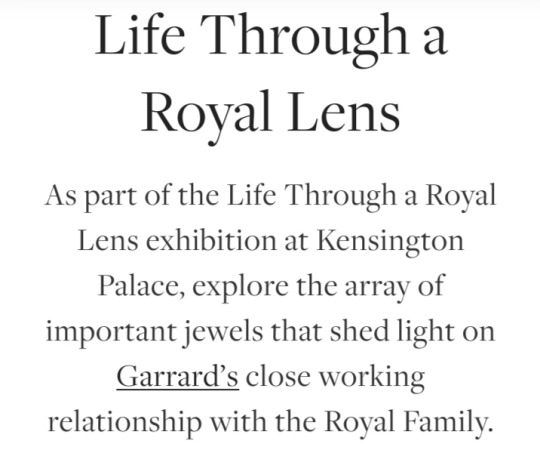
In her “accession” photographs, shot in 1952 by Dorothy Wilding, HM Queen Elizabeth II is pictured with the Girls of Great Britain and Ireland Tiara upon her head – a jewel that you might recognize because Her Majesty is seen wearing it on the front of every Bank of England banknote.
Originally the property of Queen Mary, Duchess of York, Princess of Wales and finally Queen Consort of King George V, the Girls of Great Britain and Ireland Tiara was crafted by Garrard in 1893 to be given as a wedding present from the Girls of Great Britain and Ireland committee.
Designed to be transformable, allowing it to be worn as either a necklace or coronet, over the years, Queen Mary requested that Garrard add diamonds, remove pearls, and separate the bandeau from the base so that she could wear it as a headband.
In 1947, Queen Mary gave the tiara to Princess Elizabeth as a wedding present. In 1969, now Queen Elizabeth II, she asked for the bandeau and tiara to be reunited, as it remains today.
Worn frequently by Her Late Majesty The Queen, the Girls of Great Britain and Ireland Tiara is an ongoing source of inspiration for Garrard’s designers, with the repeated pattern of diamonds encircling the base reflected in the round and geometric Windsor motif, which is a signature of the Albemarle and Fanfare jewellery collections.

The Queen’s love of brooches is legendary, and in Bob Thomas’ intimate portrait of Her Majesty at the Royal Windsor Horse Show, she is pictured wearing the Cullinan V Heart Brooch, one of several important brooches commissioned from Garrard by the Royal Family.
Showcasing the 18.80-carat heart shape Cullinan V diamond, the fifth-largest gem to be cut from the 3,106-carat Cullinan Diamond – the largest gem-quality rough diamond ever discovered – the diamond was given to Queen Mary in 1911 as a gift from the South African government.
It was originally worn by Queen Mary as part of the suite of jewellery made by Garrard for her to wear at the Delhi Durbar in 1911.
When Queen Mary died in 1953, the Cullinan V Brooch was passed to her granddaughter, Her Late Majesty Queen Elizabeth II, who was photographed wearing it throughout her reign.

The Sapphire and Diamond cluster ring worn by Catherine, Princess of Wales, formerly Duchess of Cambridge, in the 2013 portrait by her father Michael Middleton is among Garrard’s best-known creations.
Set with a magnificent 12-carat oval Ceylon sapphire, encircled by a cluster of diamonds set in 18 carat white gold, the ring was personally chosen by Lady Diana Spencer for her engagement to Prince Charles.
It became instantly famous after it was prominently showcased in an engagement shoot in 1981 that took place in the grounds of Buckingham Palace.
A new chapter in the story of Princess Diana’s engagement ring was written when, in 2010, William, Prince of Wales, formerly Duke of Cambridge, chose to propose to Catherine Middleton with the same engagement ring his father had given to Diana.
As this royal jewel, passed down through generations, takes on new meaning and sentiment upon Princess of Wales’ hand, we continue to honour this history-defining design in the 1735 collection.
Garrard’s iconic cluster setting also features prominently in the Jewelled Vault, where each one-of-a-kind creation is designed around an exceptional central stone.

A page from the scrapbook of Princess Victoria of Wales, daughter of King Edward VII and Queen Alexandra, shows photographs of Alexandra, dating from 1901, wearing a diamond crown that is much smaller than a traditional royal crown.
Crafted by Garrard in 1871 at the request of Queen Victoria, the miniature crown was designed to be worn over Queen Victoria widow’s cap.
Set with more than 1,000 diamonds and featuring alternating crosses and fleur-de-lis motifs, Garrard created the crown so that the arches could be removed.
Queen Victoria wore the Small Diamond Crown for the first time at the opening of Parliament in 1871 and frequently thereafter for state occasions.
After Queen Victoria’s death, the crown was worn by Queen Alexandra, who in turn passed it to her daughter-in-law, Queen Mary.
Today, Queen Victoria’s Small Diamond Crown is housed at the Jewel House at the Tower of London, where it is on display.
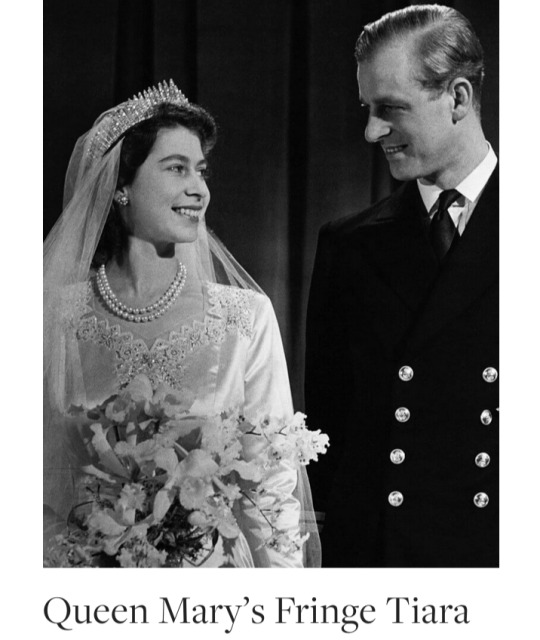
Both King George VI and HM The Queen are pictured wearing the Imperial State Crown in the Life Through a Royal Lens exhibition.
The 10th iteration of this historic jewel, the crown was crafted by Garrard in 1937 for King George VI and adjusted for The Queen ahead of her coronation in 1953.
Some of the most historic gems in the royal collection reside in this Crown Jewel, including, at the front of the crown, the Cullinan II, the second largest diamond cut from the 3,106-carat Cullinan Diamond – the largest gem-quality rough diamond ever discovered.
Above it, mounted on a diamond Maltese cross, is the Black Prince Ruby, which is not a ruby at all.
In the 16th century, it was discovered that this blood-red semi-polished stone is, in fact, a spinel, a gem that is often referred to as “the great imposter” after it was discovered that some of the most famous “rubies” seen in crown jewels around the world are, indeed, spinels.

A big moment in Garrard’s history was the recutting of the Koh-i-Noor Diamond.
This sizeable white diamond was first displayed to the public at the Great Exhibition of 1851.
In 1852, Prince Albert, who was instrumental in the creation of the Exhibition, commission Garrard to recut the diamond.
The intensely demanding cutting process lasted eight weeks and was overseen by The Duke of Wellington.
Garrard worked to create more facets to enhance its beauty; consequently, the diamond emerged as a dazzling brilliant weighing 105.6 carats.
In 1911, the Koh-i-Noor was set into Queen Mary’s Crown, newly created by Garrard for the Coronation.
Today, the fabled Koh-i-Noor Diamond (which is now only worn by a woman – if a man wears it, he will supposedly be cursed) is set at the centre of The Queen Mother’s Crown created by Garrard in 1937.

In a black-and-white photograph taken at the Delhi Durbar in 1911, held to mark the coronation of King George V and Queen Mary as Emperor and Empress of India, Queen Mary is pictured wearing the magnificent Delhi Durbar Suite.
Created by Garrard at the request of the Queen, who wanted a suite of jewels that perfectly captured the majesty of the occasion, the suite included an emerald and diamond tiara, earrings, a brooch, a stomacher, and a spectacular necklace.
Designed by Garrard in a striking circlet style, the Delhi Durbar necklace is set with eight large cabochon emeralds known collectively as the Cambridge Emeralds, with a pendant suspended beneath set with a ninth Cambridge Emerald.
In 1912, Garrard made slight alterations to the necklace, making the emerald pendant detachable and adding a second removable pendant showcasing the 8.80-carat marquise cut Cullinan VII diamond.
Queen Mary regularly wore the necklace and the other jewels in the parure for the rest of her life, after which they became the property of Her Late Majesty Queen Elizabeth II, who inherited the Delhi Durbar Necklace in 1953 and had worn it on many occasions.
The Delhi Durbar Tiara, meanwhile, was given by Her Late Majesty The Queen to Camilla, Queen Consort, after her marriage to His Majesty King Charles III.

Commissioned by Queen Mary in 1919, the Fringe Tiara was crafted by Garrard in the fashionable Russian style reminiscent of a kokoshnik and designed to be convertible so that it could be worn as either a tiara or a necklace.
Queen Mary gave the tiara to her daughter-in-law, Queen Elizabeth, later the Queen Mother, who was pictured wearing it in Cecil Beaton’s whimsical portrait.
Queen Elizabeth in turn loaned it to her daughter, Her Late Majesty Queen Elizabeth II, then Princess Elizabeth, to wear for her wedding to Philip Mountbatten in 1947 as her “something borrowed.”
In 1974, the Queen Mother loaned the Fringe tiara for another royal wedding, that of her granddaughter Princess Anne.
Most recently, it was worn by Princess Beatrice on the occasion of her wedding to Edoardo Mapelli Mozzi in 2020.

Originally created by Garrard in 1870 for Florence, Lady Poltimore, the 2nd Baron of Poltimore, the Poltimore Tiara was not publicly known until it was acquired by Princess Margaret prior to her engagement to Antony Armstrong-Jones in 1959.
Featuring elegant diamond scrolls evocative of flora – an enduring source of inspiration during the Victorian era in which it was made – it quickly became one of the Princess’s most prized possessions.
In the ensuing years, both Margaret and the towering jewel were regularly in the spotlight, including, most famously, the photograph on show as part of the Life Through a Royal Lens exhibition featuring the Princess wearing the Poltimore Tiara in the bathtub.
#Queen Elizabeth II#HM Queen Elizabeth II#Girls of Great Britain and Ireland Tiara#King George V#Queen Mary#Cullinan V Heart Brooch#Sapphire and Diamond Cluster Engagement Ring#Lady Diana Spencer#Diana Princess of Wales#Catherine Middleton#Catherine Princess of Wales#Queen Victoria#Prince Albert#Small Diamond Crown#Queen Alexandra#Imperial State Crown#Cullinan II#Black Prince Ruby#Koh-i-Noor Diamond#Great Exhibition of 1851#Delhi Durbar Suite#Cambridge Emeralds#Cullinan VII#Delhi Durbar Tiara#Fringe Tiara#Poltimore Tiara#Princess Margaret#British Royal Family#Dorothy Wilding#Tower of London
53 notes
·
View notes
Text
Name Predictions for Baby Brooksbank 2.0
As stated with my other posts like this, this is more of what I would name them, not exactly a prediction….
Girl:
Margot Alexandra Celia
Adelaide Elizabeth Grace
Julia Victoria Marie
Boy:
Christopher Thomas York
Oliver Francis Hugh
Anthony Edward Newton
#these all sound very rich#princess eugenie#jack brooksbank#I am a ride or Die for thé name Adelaide#I did a deep dive on their family histories for this#bc with august#they had some deep references
9 notes
·
View notes
Text
THE BOOKS I READ IN 2022, in the order in which I read them (*books I read before, that I was reading again):
Alexandra Chang, Days of Distraction
Elizabeth Miki Brina, Speak, Okinawa
Cynthia Dewi Oka, Fire Is Not a Country
Hanif Abdurraqib, Go Ahead in the Rain: Notes to A Tribe Called Quest
*Cathy Park Hong, Minor Feelings
Victoria Chang, Dear Memory
*Etel Adnan, Of Cities & Women (Letters to Fawwaz)
Sun Yung Shin, The Wet Hex
traci kato-kiriyama, Navigating With(out) Instruments
Raquel Gutiérrez, Brown Neon
Solmaz Sharif, Customs
*Etel Adnan, Journey to Mount Tamalpais
Lucille Clifton, Generations: A Memoir
Emerson Whitney, Heaven
Kim Thúy, em, tr. Sheila Fischman
Angel Dominguez, Desgraciado (the collected letters)
Janice Lee, Separation Anxiety
*Theresa Hak Kyung Cha, Dictee
*Cathy Park Hong, Translating Mo’um
Kyoko Hayashi, From Trinity to Trinity, tr. Eiko Otake
Lao Yang, Pee Poems, tr. Joshua Edwards & Lynn Xu
Yuri Herrera, A Silent Fury: The El Bordo Mine Fire, tr. Lisa Dillman (
Mai Der Vang, Yellow Rain
Chuang Hua, Crossings
José Watanabe, Natural History, tr. Michelle Har Kim
Walter Lew, Excerpts from: ∆IKTH 딕테/딕티 DIKTE, for DICTEE (1982)
*Bhanu Kapil, The Vertical Interrogation of Strangers
Vasily Grossman, An Armenian Sketchbook, tr. Robert & Elizabeth Chandler
Hiromi Kawakami, Parade, tr. Allison Markin Powell
Lynn Xu, And Those Ashen Heaps That Cantilevered Vase of Moonlight
*Etel Adnan, Sitt Marie Rose, tr. Georgina Kleege
Jennifer Soong, Suede Mantis/Soft Rage
*James Baldwin, No Name in the Street
*Hilton Als, The Women
Dot Devota, >She
V.S. Naipaul, The Return of Eva Perón
Yasushi Inoue, The Hunting Gun, tr. Sadamichi Yokoo and Sanford Goldstein
Molly Murakami, Tide goes out
Adrian Tomine, Shortcomings
Hisham Matar, A Month in Siena
Leia Penina Wilson, Call the Necromancer
Gabriel García Márquez, News of a Kidnapping, tr. Edith Grossman
Amitava Kumar, Bombay-London-New York
Elizabeth Alexander, The Trayvon Generation
Ryan Nakano, I Am Minor
Constance Debré, Love Me Tender, tr. Holly James
Hilton Als, My Pin-up
Victoria Chang, The Trees Witness Everything
Leslie Kitashima-Gray, The Pink Dress: A Story from the Japanese American Internment
Emmanuel Carrère, Yoga, tr. John Lambert
Ronald Tanaka, The Shino Suite: Sansei Poetry
Patricia Y. Ikeda, House of Wood, House of Salt
Soichi Furuta, to breathe
Kiki Petrosino, Bright
Sueyeun Juliette Lee, Aerial Concave Without Cloud
Nanao Sakaki, Real Play
Esmé Weijun Wang, The Collected Schizophrenias
Francis Naohiko Oka, Poems
Geraldine Kudaka, Numerous Avalanches at the Point of Intersection
Steve Fujimura, Sad Asian Music
Augusto Higa Oshiro, The Enlightenment of Katzuo Nakamatsu, tr. Jennifer Shyue
Julie Otsuka, The Swimmers
Salman Rushdie, The Jaguar Smile: A Nicaraguan Journey
Margo Jefferson, Constructing a Nervous System
Hua Hsu, Stay True
Barbara Browning, The Miniaturists
Kate Zambreno, Drifts
*Julie Otsuka, When The Emperor Was Divine
Louise Akers, Elizabeth/The Story of Drone
Wong May, In the Same Light: 200 Poems for Our Century from the Migrants & Exiles of the Tang Dynasty
Gabrielle Octavia Rucker, Dereliction
Trung Le Nguyen, The Magic Fish
Jessica Au, Cold Enough for Snow
Tongo Eisen-Martin, Blood on the Fog
Lucas de Lima, Tropical Sacrifice
*Like a New Sun: New Indigenous Mexican Poetry, ed. Víctor Terán & David Shook
Billy-Ray Belcourt, A Minor Chorus
Kazim Ali, Silver Road
*Sadako Kurihara, When We Say Hiroshima, tr. Richard Minear
Simone White, or, on being the other woman
*James Baldwin, The Devil Finds Work
Christina Sharpe, Ordinary Notes
*Raquel Gutiérrez, Brown Neon
Marguerite Duras, The Man Sitting in the Corridor
Gayl Jones, Corregidora
*Bhanu Kapil, The Vertical Interrogation of Strangers
*Etel Adnan, Seasons
Gwendolyn Brooks, to disembark
Cristina Rivera Garza, The Taiga Syndrome, tr. Suzanne Jill Levine and Aviva Kana
Gwendolyn Brooks, In the Mecca
Nona Fernández, The Twilight Zone, tr. Natasha Wimmer
Selva Almada, Dead Girls, tr. Annie McDermott
*Theresa Hak Kyung Cha, Dictee
Valerie Hsiung, To Love an Artist
*Theresa Hak Cha, Exilée and Temps Morts
Dao Strom, We Were Meant To Be a Gentle People
Randa Jarrar, Love Is An Ex-Country
*Dao Strom, Instrument
Osamu Dazai, Early Light, tr. Ralph McCarthy and Donald Keene
Osamu Dazai, The Setting Sun, tr. Donald Keene
Rachel Aviv, Strangers To Ourselves: Unsettled Minds and the Stories That Make Us
Mahmoud Darwish, Journal of an Ordinary Grief, tr. Ibrahim Muhawi
16 notes
·
View notes
Text

Henry ‘Chips’ Channon: The Diaries (Vol. 1), 1918-38, entry for 2nd July 1923
—
Monday 2nd July
In the evening we dined at Brook House some ninety strong with General and Mrs Vanderbilt.¹ Later there was a large ball, very fashionable and grand yet ‘kind’. Mrs Vanderbilt passed first into dinner with Paul of Serbia, which was correct but seemed to irritate Lord Curzon .... At midnight the P of W and the Yorks arrived ... her² first ball. Everyone was interested to see what would happen and what etiquette would be precedented and established. She was charming, dignified and blushing a little. Everyone ‘bobbed’ to the ground, if anything even lower than to the princes. Now that is settled. She brought no lady-in-waiting as Princess Mary³ frequently does ...
—
1. Brigadier General Cornelius Vanderbilt III (1873-1942), of New York, was a soldier and yachtsman: in 1896 he married, greatly against his father’s wishes, Grace Graham Wilson (1870-1953).
2. The former Lady Elizabeth Bowes-Lyon.
3. Princess (Victoria Alexandra Alice) Mary (1897-1965), only daughter of King George V and Queen Mary. She married Henry George Charles Lascelles (1882-1947), by courtesy Viscount Lascelles, who in 1929 became the 6th Earl of Harewood. She was created Princess Royal in 1932.
#chips channon#channon diaries#1923#1920s#cornelius vanderbilt iii#grace vanderbilt#prince paul of yugoslavia#george curzon#edward viii#george vi#queen elizabeth the queen mother#mary princess royal#brook house#🕰️
4 notes
·
View notes
Note
Hello 😊I want to ask you a question. You know, we recently lost Queen Elizabeth II, which was a huge loss for the people who loved her.Here's the question I'm going to ask you.Queen Elizabeth II would definitely like to meet her great-grandmother, Queen Alexandra.Did queen Alexandra know when her mother Elizabeth bowes lyon (the Queen Mother) was pregnant with Queen Elizabeth, what was her reaction? And how was it between Elizabeth bowes Lyon, who married her granddaughter, and queen Alexandra?Dec. How did he find her ,did he love her ? Please answer my question . Thanks in advance for your reply😊️️
Hi, apologies for taking awhile to reply.
According to my calculations, Elizabeth was 4 months pregnant when Alexandra died, so I doubt she knew. I do find it endearing that baby Elizabeth was named Elizabeth Alexandra Mary, honouring her great-grandmother and grandmother, though.
As for the relationship between Elizabeth and Alexandra, she thought she was a lovely girl, and that her grandson Bertie made the right choice. In her letters she often comments how happy they are, for instance "She had been pleased with some nice letters from Georgie and also hoped 'the young pair are very happy together; she [Elizabeth] is such a dear bright little one.'"
There's also this story which, in my opinion, perfectly reveals Alix's sentiments.
Louise came to stay at Sandringham from 18-23 July and on the 30th Queen Alexandra and Queen Olga attended the Sandringham Estate Cottage Horticultural Society's annual show. Cecil Beaton, (twenty) on holiday in Norfolk, was visiting Sandringham with his mother and aunt. They were delighted to find the flower show taking place, especially when Queen Alexandra arrived and they were near enough for Mrs Beaton to curtsey to her. [...] But as everyone hurried to the tent to see her, he "nearly wept when I saw the old Queen. She wasn't at all as I had imagined. She was not a bit painted or enamelled & grotesque. She was merely a perfectly charming old lady, with... a very beautiful face &... a marvellous wig, a mass of curls, tight to the head... & so frail. [...]" He and his relatives thought about her all day as they walked round the garden, enjoying flowers, wondering what she would have to eat and imagining her moving about the house. When they got close enough, they peered through the windows and "saw her tottering about the rooms & she looked at a photo of the Duke & Duchess of York."
4 notes
·
View notes
Text
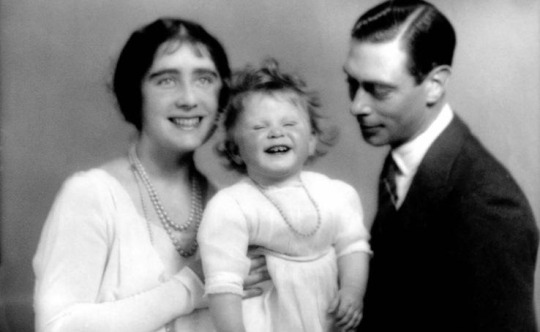
Family milestones through the years
Country Life | Published 14 September 2022
1920s
• Winston Churchill described ‘an air of authority and reflectiveness astonishing in an infant’ when Elizabeth was only 2½
• In 1929, she appeared on the cover of Time, which reported that the Duchess of York’s preference for the colour yellow for her daughter’s clothes and the decoration of her nursery had set a trend across America
1930s
• George V (‘Grandpa England’) dies on January 20, 1936. Unable to face ruling without Wallis Simpson by his side, Elizabeth’s uncle, Edward VIII, submits his abdication on December 10, before broadcasting his decision to the nation the following day
• The first Pembroke Welsh corgi, Dookie, arrives at Royal Lodge in the summer of 1933, bred by Miss Evans of Rozavel Kennels in Reigate. He was later joined by Jane
• On her fourth birthday, Elizabeth receives a pony from her grandfather. In 1932, the people of Wales build Y Bwthyn Bach (the Little House) for her—it still stands in the Windsor grounds
• In early 1933, a new governess arrives: Marion Crawford (‘Crawfie’). She remains until her own wedding in 1947, shortly before Elizabeth’s
1940s
• In 1942, her father shows her the royal racehorses in training. After patting the King’s Derby runner, Big Game, Elizabeth doesn’t wash her hands for the rest of the day. A horse of her own comes in the form of a wedding present from the Aga Khan and her racing colours of purple body, scarlet sleeves and black velvet cap—the same as her father’s—are registered in 1949
• April 25, 1942: Princess Elizabeth signs up for war service
• August 25, 1942: Prince George, Duke of Kent, Princess Elizabeth’s uncle, is killed in a flying accident over Morven in Scotland at the age of 39
• November 1943: the Daily Mail reports that Elizabeth had hunted with the Garth Foxhounds and the Duke of Beaufort’s Hounds ‘in accord with the general policy of making her life as “normal” as possible’
• In 1947, she attends her first Opening of Parliament
1950s
• August 15, 1950: Princess Anne born
• March 24, 1953: Queen Mary dies
• November 1953: the Queen and the Duke of Edinburgh embark on a 43,618-mile tour of the Commonwealth that lasts until May 11 the following year
• October 1955: Princess Margaret ends her relationship with Group Capt Peter Townsend
• February 1957: the Queen endows the Duke of Edinburgh with the style and title of Prince
• December 25, 1957: the first Christmas Message is broadcast on television for the first time (it was live)
• 1958: Prince Charles goes to school
1960s
• The birth of Prince Andrew represents the first child born in a ‘family on the throne’ since Princess Beatrice in 1857
• A photograph taken by Prof John Hedgecoe at Buckingham Palace on June 22, 1966, serves as a model for sculptor Arnold Machin. It has now been reproduced more than 200 billion times on currency and stamps
• Princess Margaret (1960) and Princess Alexandra (1963) are married at Westminster Abbey
• In 1960, it is announced that descendants of the Queen who did not bear the title HRH and females who might marry would henceforth carry the name Mountbatten-Windsor
• The State Opening of Parliament is televised for the first time in 1966
• The Duke and Duchess of Windsor attend the unveiling of a plaque honouring Queen Mary in 1967
• In 1969, an all-party commission of MPs is set up to look into the Civil List allowance—its report comes in 1971
1970s
• In 1970, to celebrate the 200th anniversary of Capt Cook’s voyage, the Queen and the Duke of Edinburgh visit Fiji, Tonga, New Zealand and Australia. Three months later, Fiji and Tonga declare their independence
• From 1970, Prince Charles and Princess Anne have increasing public roles
• In 1970, the Queen unveils the second portrait of her by Annigoni
• That year, the Queen grants a Royal Charter to the Jockey Club, the first governing body of any sport to be accorded such an honour • The committee reviewing the Civil List reports in 1971 and increases the Queen’s allowance from £475,000 to £980,000 per year (it hadn’t been reviewed since her accession). There is no allowance for her personal use. In 1975, it’s raised to £1.4 million
• The Duke of Windsor dies on May 28, 1972—the Duchess stays at Buckingham Palace for the funeral. Prince William of Gloucester, the Queen’s cousin, is killed in a flying accident
• The Queen and the Duke of Edinburgh celebrate their silver wedding anniversary in 1972. At a lunch to mark the occasion, the Queen says: ‘I think that everybody will concede that, on this of all days, I should begin my speech “My husband and I”’
• On November 14, 1973, Princess Anne marries Capt Mark Phillips in Westminster Abbey—the first time a member of the Royal Family has married a commoner (it’s also the birthday of Prince Charles and the Archbishop of Canterbury)
• In 1974, a kidnap attempt of Princess Anne is foiled. The Queen’s uncle, the Duke of Gloucester dies that year
• In 1976, Princess Margaret and Lord Snowdon announce their marriage is over—they divorce in 1978
• In her Silver Jubilee year, the Queen travels 56,000 miles around the South Pacific and to 36 counties in Britain. Her Jubilee Appeal to ‘help young people help others’ raises £16 million
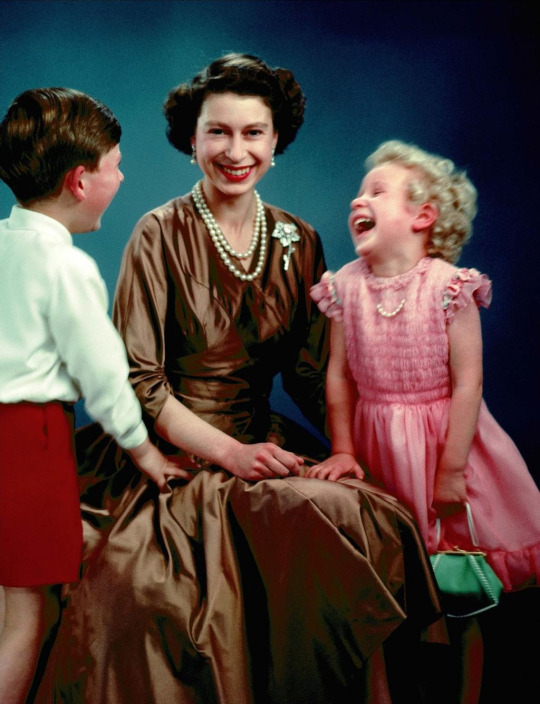
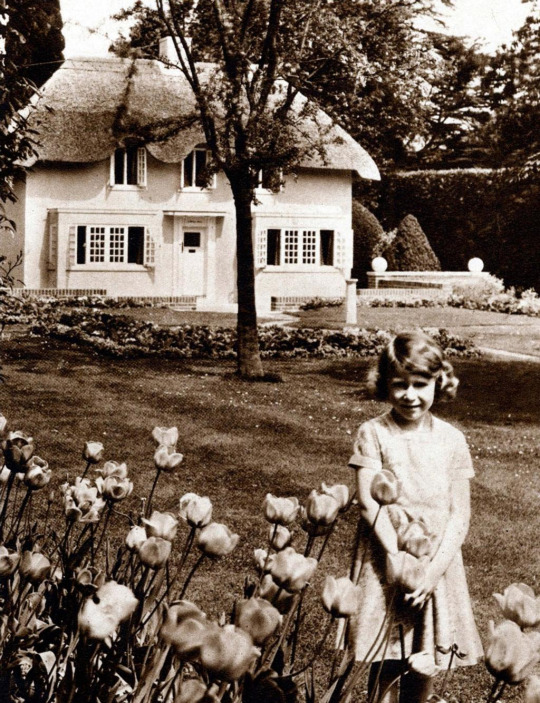
1980s
• In 1980, more than two million people line the streets of London to see the Queen Mother pass on her way to a service to celebrate her 80th birthday
• On May 15, 1981, the Queen again becomes a grandmother, when Princess Anne gives birth to Zara
• In 1982, Prince Andrew takes part in the Falklands War
• On July 9, 1982, the Queen awakes to find Michael Fagan in her bedroom
• The Waleses’ second son, Henry (Harry), is born on September 15, 1984
• In 1986, Prince Andrew marries Sarah Ferguson—a ‘breath of fresh air’—in Westminster Abbey and becomes The Duke of York
• That year, the Duchess of Windsor dies and is buried with her husband at Frogmore,
• Also in 1986, the Queen becomes the first British monarch to visit China—crowds welcome ‘the English country female King’
• Princess Beatrice is born on August 8, 1988
• The Princess Royal and Capt Mark Phillips separate in late August 1989
1990s
• Princess Eugenie is born on March 23, 1990
• On a state visit to the US in 1991, the Queen becomes the first British monarch to address Congress
• The end of 1992 brings some good news as The Princess Royal marries Commander Tim Laurence in Scotland
• In 1994, The Prince of Wales appears in a frank—and ill-advised—television interview with Jonathan Dimbleby, in which he admits adultery
• In October that year, the Queen becomes the first reigning British monarch to set foot on Russian soil
• The Duke and Duchess of York are divorced in May 1996
• When on holiday in Mustique in 1998, Princess Margaret suffers a stroke
• In 1997, extension work begins on The Queen’s Gallery at Buckingham Palace, tripling its size
• Prince Edward marries in St George’s Chapel, Windsor (June 19, 1999)
2000s
• It was an eventful time in 2000: Princess Margaret celebrated her 70th birthday, The Princess Royal her 50th, Prince William his 18th and, on August 4, the Queen Mother her 100th—she’s one of 12 centenarians to get a card from the Queen, but hers was the only one signed ‘Lilibet’
• As part of her Golden Jubilee celebrations in 2002, the Queen dines at 10, Downing Street with the five living former Prime Ministers who had served under her: Tony Blair, John Major, Margaret Thatcher, James Callaghan and Edward Heath • Lady Louise Windsor is born on November 8, 2003
• Prince William graduates from St Andrews University on June 23, 2005
2010s
• Prince William marries Catherine Middleton in Westminster Abbey on April 29, 2011, and is created Duke of Cambridge
• The Queen’s first great-grandchild, Savannah, the daughter of Peter Phillips, is born on December 29, 2010
• The Duke and Duchess of Cambridge have three children: Prince George is born on July 22, 2013, Princess Charlotte on May 2, 2015, and Prince Louis on April 23, 2018
• In 2015, changes are made to the order of succession to give female children an equal right to come to the throne
• On May 19, 2018, Prince Harry becomes Duke of Sussex and marries Meghan Markle and, on October 12, Princess Eugenie marries Jack Brooksbank. On May 6, 2019, the Sussexes welcome a son, Archie Harrison Mountbatten-Windsor, and, on June 4, 2021, a daughter, Lilibet Diana
• On January 31, 2019, the Queen surpasses Eleanor of Aquitaine to become the longest-reigning female ruler. Eleanor (1122–1204) was Queen Consort of France and England and Duchess of Aquitaine for 66 years and 358 days
2020s
• Princess Beatrice marries Edoardo Mapelli Mozzi on July 17, 2020
• Prince Philip dies on April 9, 2021
• Elizabeth II celebrates her Platinum Jubilee in June, 2022, with a four-day national holiday
27 notes
·
View notes